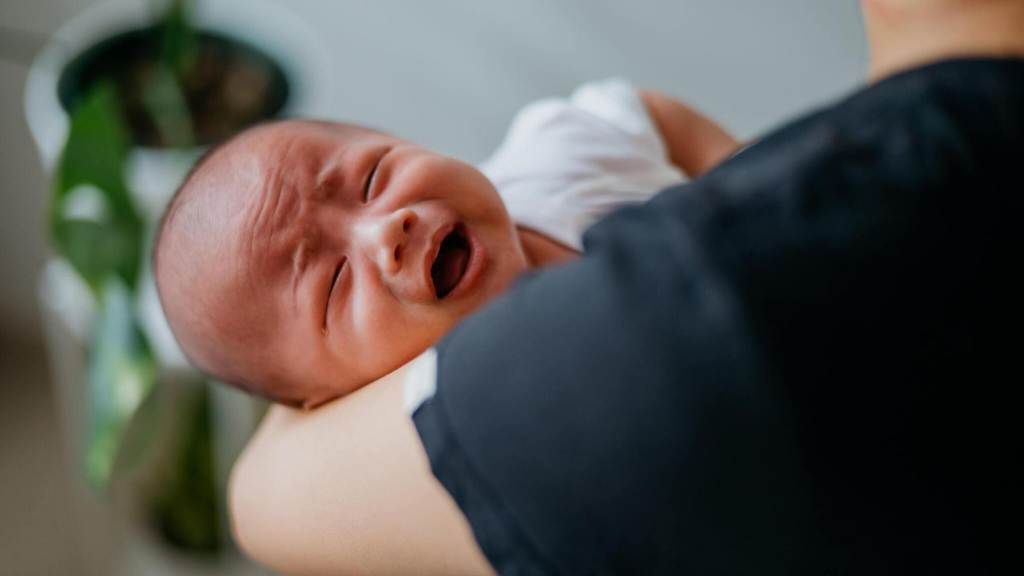
Table of Contents
Watching your baby grow is a precious experience. However, if you notice your child is not reaching certain milestones, it could be a sign of autism spectrum disorder (ASD). According to Dr. Thomas Frazier, a clinical psychologist and autism expert, some signs may appear as early as 6 to 12 months old, or even earlier. While it’s rare to spot signs in newborns, some parents do. Recognizing these signs of autism in babies early and getting a prompt diagnosis is important for managing ASD effectively.
What is Autism?
Autism is a complex condition that affects how people interact, learn, and communicate. It can lead to repetitive behaviors and intense interests. Each person with autism is unique, and the condition varies from mild to severe. The Centers for Disease Control and Prevention (CDC) says it affects about 1 in 36 children, with boys being more affected than girls.
What Causes Autism?
Doctors aren’t sure what causes autism, but they think it’s a mix of genes and the environment. Some things that might raise the chances of autism include:
- Autism stems from a mix of genetics and environment.
- Risks include having an autistic sibling, premature birth, and low birth weight.
- Pregnancy issues and older parental age also play a role.
- Being male and born to older parents increases the chances.
Notably, vaccines have no connection to autism.
Signs of Autism in Babies
Identifying the signs of autism in babies is a critical aspect of early intervention, as some parents may notice these indicators during the early stages of development. While every baby develops at their own pace, understanding typical developmental milestones and observing deviations from expected behaviors can help parents recognize potential red flags. For example, infants with autism may exhibit limited responsiveness to social cues, such as failing to make eye contact or respond to their names. They may also need to improve in communication, such as not babbling or using gestures to express their needs.
Dr. Frazier, a clinical psychologist and autism researcher, advises parents to pay attention to how their babies interact with their environment and caregivers. Typically, infants display social behaviors like smiling, babbling, and attempting to communicate through sounds or gestures. However, infants with autism may show less interest in social interactions and exhibit communication challenges early on. While these signs are not definitive proof of autism, they warrant further assessment by healthcare professionals to determine the underlying cause and appropriate intervention strategies.
Parents need to approach the identification of autism signs with awareness and caution. Mandi Silverman, an associate psychologist at Positive Developments, emphasizes that while certain behaviors may raise concerns, they do not necessarily indicate autism. Other developmental or social factors could contribute to similar symptoms, underscoring the need for comprehensive evaluation and professional guidance. By remaining vigilant and seeking timely support, parents can better understand their children’s developmental needs and access appropriate interventions to promote their well-being.
Early Signs of Autism in Babies (ages 0 to 3 months)
Symptoms may include:
- Not tracking moving objects with their eyes
- Sensitivity to loud sounds
- Limited facial expressions
- Difficulty recognizing faces, especially new ones
Early Signs of Autism in Babies (ages 4 to 7 months)
Symptoms may include:
- Lack of interest in specific sounds, like not turning toward them
- Reduced display of affection
- Minimal babbling
- Limited verbal expressions, such as not laughing or making sounds
- Not reaching for or holding onto objects
- Limited facial expressions or emotional responses, like infrequent smiling
Signs of Autism in 1-year-old Babies (ages 8 to 12 months)
Symptoms may include
- Not crawling
- Avoiding eye contact
- Limited or unclear speech
- Rare use of gestures like waving or head shaking
- Not pointing at objects or pictures
- Appearing unsteady or unable to stand even with support
These were the signs of autism in 1-year-old babies
Signs of Autism in Babies - What To Do Next
If you observe potential autism symptoms in babies, Dr. Frazier recommends scheduling a visit with your pediatrician. During this appointment, developmental concerns will be discussed, and your baby will be evaluated for autism. According to Dr. Frazier, earlier diagnosis allows for enrollment in developmental and behavioral interventions, which can be more effective when initiated at a younger age.
Early intervention aims to support autistic children in reaching their full potential, as the brain is more receptive to treatments during early developmental stages. As your child grows, interventions may include speech therapy, occupational therapy, mental health counseling, and other strategies tailored to enhance your child’s well-being. Dr. Silverman emphasizes the objective of making symptoms more manageable and improving the overall quality of life for the child.
How To Handle an Autism Diagnosis
Navigating an autism diagnosis can feel overwhelming, but it’s crucial to remember that autistic individuals lead rich and meaningful lives. Understanding that autism is not inherently negative is key; instead, focus on how to best support your child.
There are various therapies and interventions available to address your child’s specific needs, including cognitive behavioral therapy, speech therapy, and sensory processing therapy. While there’s no one-size-fits-all approach, early intervention can positively impact your child’s prognosis, according to the Autism Research Institute.
A few common therapies:
- Cognitive behavioral therapy
- Behavior management therapy
- Physical therapy
- Speech therapy
- Occupational therapy
- Nutritional therapy
- Educational interventions
- Medication
- Sensory processing therapy
Animal-assisted therapy, creative arts therapy, and chiropractic treatments are additional options that may provide benefits.
It’s essential to respect the autonomy and preferences of autistic individuals. While treatments and therapies can be beneficial, many autistic individuals embrace their diagnosis as an integral part of their identity and may not seek to change it. The goal is to provide support and accommodations that enable them to thrive and fulfill their potential.
Final Thoughts
Spotting signs of autism in babies is important for early help. By noticing signs like trouble with socializing or delayed speech, parents can seek advice. With early support and understanding, children with autism can get the help they need to grow well.










